|
We might call this post "How to Breathe Correctly". But pranayama is about much more than breathing.
Pranayama is a Sanskrit word made of two parts: "prana," which means vital energy and "yama," which means control. So pranayama means to control one's store of vital energy. This is accomplished through exercises involving the breath. Pranayama is the fourth limb of Raja or Ashtanga Yoga and is listed after Asana. Accordingly, pranayama is often taught as a next step after a beginner starts to understand how to practice yoga poses correctly. Pranayama both enhances our experience of asana, as it allows us to regulate our breathing to practice yoga poses more steadily and comfortably, and is the first step toward meditation, as it balances our energies and settles the mind. All breathing is practiced through the nose in yoga. However, if you feel claustrophobic or you're having trouble getting your breath, try breathing in through your nose and out through your mouth a few times and return to breathing through your nose, and then, the pranayama practice as you're ready. It may seem esoteric, but actually pranayama practices are very simple. The most important thing for the beginning practitioner is not to strain or overdo these practices, which is why it is usually recommended to practice these exercises under the guidance of an experienced teacher. There are also several breathing techniques that, while not formal pranayama practices, are very useful in teaching the beginner how to breathe comfortably and correctly before trying to practice pranayama in earnest. Practice all breathing and pranayama techniques for at least a few rounds and up to a few minutes each. I explore all these preparatory exercises and pranayama practices below with gifs. Because the breath is really subtle, you'll have to pay close attention to see what is happening in the gifs.
2 Comments
Swami Satchidananda spoke about habit-setting like changing a car's oil. To get the dirty oil out, you simply pour clean oil in and the old oil is purged from the engine. Our habits are like this too: if we focus on adding good habits, we will slough the bad habits off eventually. If we focus on reducing or removing the bad ones, it seems to only exacerbate the issue. Apparently, this is called ironic process theory, as related this month by the brief New York Times article, "Resistance Is Futile. To Change Habits, try Replacement Instead." With the big spring clean upon us, many of us look to "clean" ourselves. Which often takes the form of habit-setting.
Purity is a niyama (observance) in Raja Yoga. Although purity might be taken to mean maintaining personal hygiene rituals, wearing clean clothes and keeping a clean house, it also means creating purity within, physically and mentally. Some people have a negative reaction to the word "purity" because today, it may connote an impossible standard of goodness. What I think Patanjali was suggesting is to have a Replacement attitude instead of a Resistance attitude, as described by the NYT and Swami Satchidananda. We don't have to be completely pure to get benefits from making a choice that leads us to more purity. Even though there is always dirt, shouldn't we sweep our house from time to time? Yoga and Ayurveda offer several practices that aim to purify us on many levels. Hatha yoga keeps our bodies strong and supple, meditation keeps our mind nimble and focused, and a healthy diet ensures we have good, clean energy to run on. There are other practices, called kriyas, that some yogis use to create a purer internal environment, such as using a neti pot or practicing eye exercises. Fasting is another cleansing practice espoused for centuries by yogis, that is gaining credibility in the scientific world. For a more scientific approach to fasting than I'm going to take here, you can look at this article from CMAJ or an opinion from a neuroscientist on the Johns Hopkins Health Review. Whether or not you fast, it's still a good idea to take a break from foods that tax the digestive system. This is especially true as we transition from heavier foods that warm us in the winter, to more raw foods (which can also tax the system) in the spring and summer. To make the transition smoother, either from one season to another or as an intermediary before and after fasting, yogis eat kitchari. An Ayurvedic recipe traditionally made of mung beans and white rice, it is very easy to digest, filling, and nutritious. Ayurvedic practitioners use it to purify the blood and cleanse the body. It is also delicious. Very, very delicious. Oh yeah, and super easy and fast to make! So if you'd like to replace an old eating habit with a new, tasty, purity-enhancing habit, try this recipe for kitchari. Five Keys Yoga tested and approved. Yum! Kitchari
4 servings, 30 minutes
Ingredients
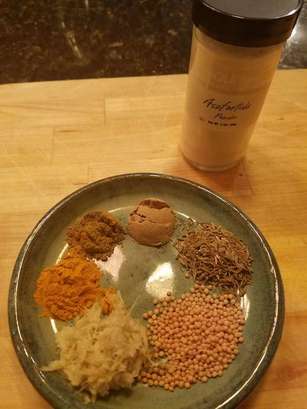
1 C mung dal
1/2 C white rice 2-3 C water 2 T ghee (clarified butter) 1 T grated, fresh ginger 1 tsp mustard seeds 1 tsp cumin seeds 1/2 tsp cumin powder 1/2 tsp coriander powder 1/2 tsp turmeric powder Pinch of hing (asafoetida powder) Salt to taste I usually add a few dried, hot chilies (chopped) and any vegetables I have in the fridge, but that is optional.
Cook the Dal and Rice
Temper the Spices
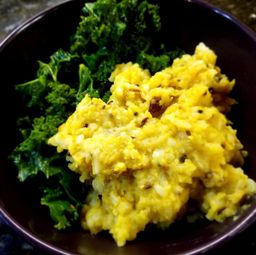
I like to eat kitchari with a big heap of steamed kale. The crunchy texture of the kale goes so well with the creamy kitchari, and the extra fiber completes the meal. I often top with nutritional yeast or Bragg's liquid aminos for flavor and extra vitamins and nutrients. You can also adjust the seasoning to suit your dosha, or Ayurvedic type.
Did you try the recipe? How did it taste?
|
Archives
July 2024
About
Just some thoughts about yoga as I go... Categories
All
|
FIVE KEYS YOGA
|
WHAT OUR CLIENTS SAYFive Keys is fantastic! The studio is lovely and soothing, and the teachers are very caring and attentive. |
I've ... probably been to 25 different yoga studios. This is one of the most welcoming, calming spaces with very talented instructors. |
I love this yoga studio. It's a great balance of a good workout and relaxation and feels like a real community. |
An ideal studio for someone new to yoga. |


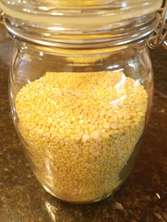
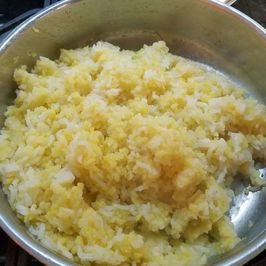
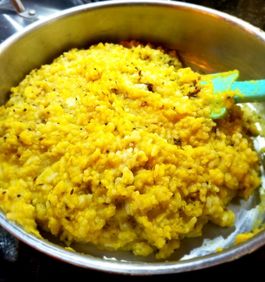
 RSS Feed
RSS Feed
